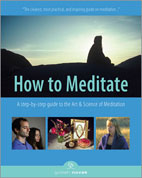 How to do the Full Yogic Breath:
How to do the Full Yogic Breath:
Begin by standing upright, arms at the sides. Close your eyes and feel centered in the spine. Breathe slowly and deeply from the diaphragm. Now slowly bend forward, keeping the knees relaxed.
Exhale slowly and completely as you bend forward, allowing your body to come down only as far as is comfortable and your hands to relax toward your feet. Pause and relax for a few seconds in this position. Now inhale slowly as you raise the torso. As the inhalation continues and your body slowly comes upright, draw the hands up along the sides of the body, elbows extended outward. With the incoming breath, feel that you are drawing not only air, but also energy and life-force, into every cell of the body and brain. Continue inhaling and raising the trunk and arms, finally stretching the hands high above the head, inhaling as completely as possible. Hold this position for a few seconds, then slowly exhale and relax into the forward bend again.
Repeat three or four times. End by exhaling into the original standing position with the arms at the sides.
How to do the Corpse Pose (Savasana):
The Corpse Pose helps withdraw all tension from the muscles. It is both the simplest and yet one of the most difficult of all the yoga postures. Physically it is extremely easy. The difficulty is that to practice it to perfection one must relax totally—not an easy thing for most people.
Lie flat on your back with your legs extended, feet slightly apart, and your arms along the sides of your body. The body should be properly aligned, with the head, neck, trunk, and legs in a straight line. It is best to have the palms turned upward to help to induce a feeling of receptivity.
After assuming this position, begin a systematic relaxation of the whole body. Start by ridding the body of unconscious tension: first, tense the body to increase the tension and then relax completely. There is a special “double breath” which helps oxygenate the system and remove toxins. It is done by inhaling through the nose with a short inhalation followed immediately by a longer one, in a huh/huuuuhh rhythm. The exhalation with a double breath is through both the nose and mouth with the same short/long rhythm.
Inhale deeply with a double breath, tense the whole body until it vibrates, then throw the breath out in a double exhalation and relax the body by releasing the tension. Stay relaxed for a few seconds and then do practice the double breath again, three to six times, trying to relax your whole body after each round. You can follow this with a deep relaxation of the various body parts, starting with the feet. It may help to think of the area being relaxed as filling with space and growing very light. Gradually work your way up the body.
How to Relax the Mind:
Regular Breathing. Inhale slowly, counting to 8, 10, 12, or higher, hold the breath for the same number of counts while concentrating at the point between the eyebrows, then slowly exhale for the same number of counts.
Alternate Breathing. Similar to Regular Breathing, except that the breath is inhaled through one nostril and exhaled through the other. Close the right nostril with the thumb of the right hand and inhale through the left nostril for a count of 8, 10, 12, or higher. Then, gently squeeze both nostrils shut for the same count, using the thumb for one nostril and ring finger for the other. Then, keeping the left nostril closed with the ring finger, exhale through the right nostril.
